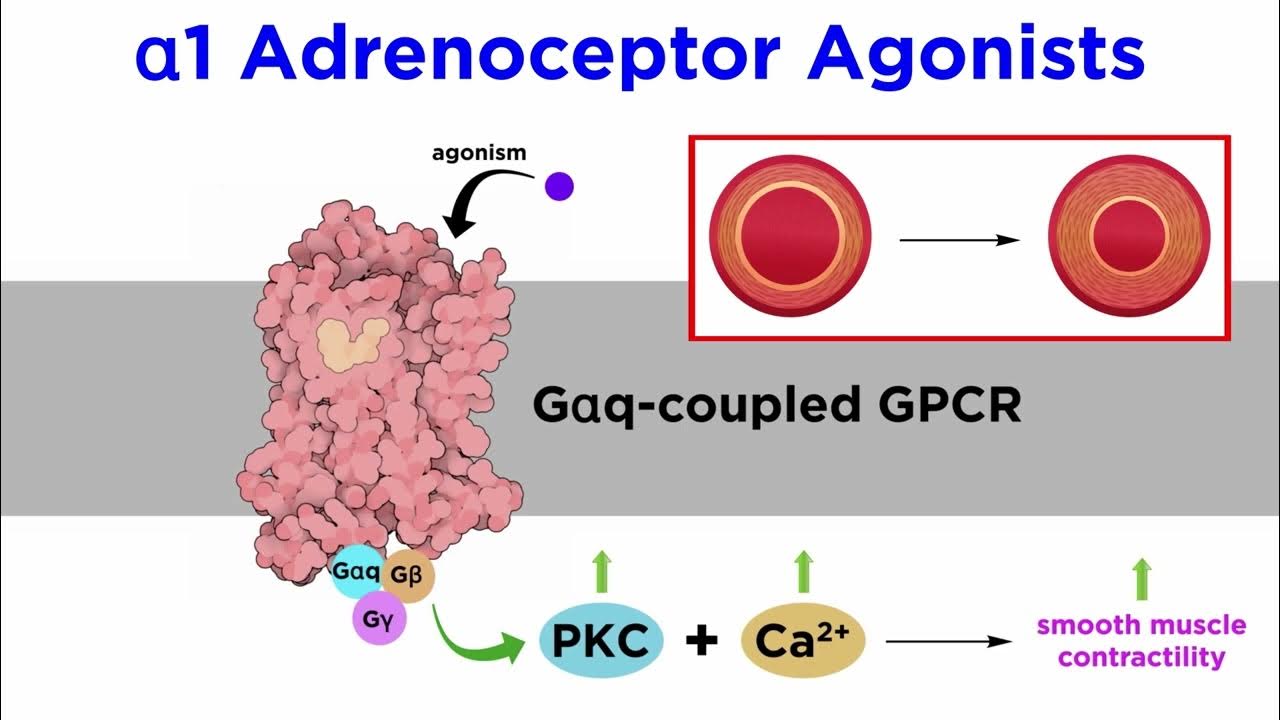CVS 2 Blood Pressure
Summary
TLDRThis video script explores the mechanics of blood pressure, a critical force for blood flow and bodily function. It explains how blood pressure is governed by the heart's contractions, the aorta's elasticity, and the peripheral vasculature's resistance. The script delves into measuring blood pressure, the significance of systolic and diastolic pressures, and the health implications of hypertension, including heart failure and stroke risks.
Takeaways
- 🌊 Blood pressure is the force that keeps blood flowing and is essential for bodily functions.
- 🔍 The vascular system's surface area increases dramatically at the arterioles and capillaries, slowing blood velocity to facilitate nutrient and gas exchange.
- 📈 Blood pressure governs the speed of blood flow, which is influenced by the heart's contractions and the elasticity of the aorta.
- 🚀 The left ventricle's contraction sends a surge of blood into the aorta, creating a pressure wave felt as the pulse throughout the body.
- 👂 The pulse can be felt at various points, such as the radial artery on the wrist, and is equal to the heart rate in healthy individuals.
- 🔗 Arterial blood pressure is related to cardiac output and the resistance of peripheral vasculature, with systolic and diastolic pressures indicating heart function.
- 📊 Blood pressure measurement involves using a cuff to stop blood flow and then releasing pressure to detect the systolic and diastolic pressures through sound.
- 💓 Systolic pressure during heart contraction reflects the heart's effort, while diastolic pressure during relaxation indicates blood flow ease from arterioles to capillaries.
- 📉 Mean arterial pressure is the average force exerted by blood on arterial walls, influenced by the relative times of systolic and diastolic phases.
- ⚠️ High blood pressure, or hypertension, can be caused by hardened arteries or excessive resistance, leading to severe health risks like heart failure and stroke.
- 🛡️ The elasticity of arteries, even when the heart is relaxed, ensures continuous blood flow, highlighting the importance of arterial health.
Q & A
What is the primary function of blood pressure in the human body?
-Blood pressure is a vital force that keeps our blood flowing and our bodies functioning by providing the necessary pressure to circulate blood throughout the body.
How does the branching network of arterial capillaries and venules affect blood flow?
-The branching network of arterial capillaries and venules dramatically increases the surface area of the vascular system, which results in a significant decrease in the speed or velocity of the blood, facilitating the exchange of nutrients, gas, and byproducts.
What is the relationship between blood pressure and the speed of blood flow?
-The speed of blood flow is governed by the pressure of the fluid, meaning that higher blood pressure can lead to faster blood flow, and vice versa.
What is the pressure wave in the context of blood flow and how can it be felt?
-The pressure wave is a surge of blood sent into the aorta each time the left ventricle contracts, causing the aorta to expand and create pressure. This wave can be felt as the pulse in various places on the body, such as the radial artery on the wrist.
How is arterial blood pressure related to cardiac output and peripheral vasculature resistance?
-Arterial blood pressure is related to the cardiac output, which is the amount of blood pumped by the heart per minute, and the resistance to blood flow encountered within the peripheral vasculature.
What are the two phases of heart function related to blood pressure measurement?
-The two phases of heart function related to blood pressure measurement are systolic pressure, which occurs during the heart's contraction phase, and diastolic pressure, which occurs when the heart is in its relaxation phase.
How is blood pressure measured using a cuff and stethoscope?
-Blood pressure is measured by placing a cuff around the upper arm and inflating it to stop blood flow. As the pressure is released, the first sound heard through the stethoscope is the systolic pressure, and the last sound before flow becomes silent is the diastolic pressure.
What does the systolic pressure indicate about the heart's function?
-The systolic pressure, which occurs during the contraction phase of the heart, provides an estimate of how hard the heart is working to pump blood.
What does the diastolic pressure indicate about the heart's function?
-The diastolic pressure, which occurs during the heart's relaxation phase, indicates how easy it is for the blood to flow from the arterioles into the capillaries.
What is the mean arterial pressure and how is it calculated?
-The mean arterial pressure is the average force exerted by the blood against the arterial wall during one contraction and relaxation phase of the heart. It is calculated to reflect the time spent in each phase, typically 2/3 diastolic and 1/3 systolic at rest.
What are the potential health risks associated with high blood pressure?
-High blood pressure, or hypertension, is a chronic condition that can strain the cardiovascular system, potentially weakening the heart muscle and leading to heart failure. It can also make blood vessels brittle, increasing the risk of bursting and causing a stroke, especially in the brain.
Outlines

このセクションは有料ユーザー限定です。 アクセスするには、アップグレードをお願いします。
今すぐアップグレードMindmap

このセクションは有料ユーザー限定です。 アクセスするには、アップグレードをお願いします。
今すぐアップグレードKeywords

このセクションは有料ユーザー限定です。 アクセスするには、アップグレードをお願いします。
今すぐアップグレードHighlights

このセクションは有料ユーザー限定です。 アクセスするには、アップグレードをお願いします。
今すぐアップグレードTranscripts

このセクションは有料ユーザー限定です。 アクセスするには、アップグレードをお願いします。
今すぐアップグレード5.0 / 5 (0 votes)






